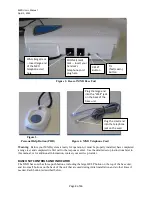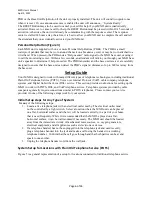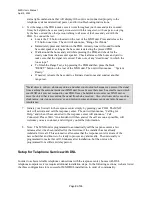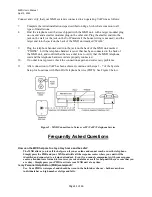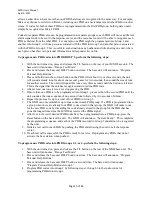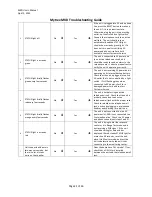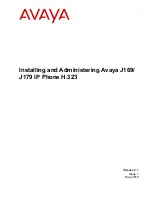
MXD Users Manual
April 5, 2012
Page 7 of 26
Figure 5. MXD Connections for Traditional (POTS) Telephone Service
1.
Complete the installation steps common to all setups that are listed on Page 6.
2.
Plug your telephone handset cord into the jack on the back of the MXD unit marked
“PHONE”.
If your home is equipped with DSL service, see configurations on page
8
.
3.
Find the telephone cord that was shipped with your MXD unit, with a larger modular
plug on one end and a smaller modular plug on the other end. Plug the smaller end into
the phone jack on the wall, and the larger end into the jack on the back of the MXD
marked “WALL”.
NOTE: When your MXD unit calls the response center, the telephone and any
other device connected to the PHONE jack on the rear of your MXD unit will be
disconnected during the call. This means if this telephone is off hook, your MXD
unit can still contact the response center. If there are other extensions of the same
telephone number in your home that are off-hook when your MXD unit needs to
place a call, it will not be able to unless the local telephone company has installed an
RJ31X jack or devices called
“
Line Grabbers
”
are properly installed on each
telephone extension. The RJ31X jack allows the MXD unit to disconnect any
telephone in the house that may be in use. IF you elect to have an RJ31X installed,
contact your service provider and ask for an RJ31X telephone cord, Mytrex part
number RA400-RJ31X.
If you elect to use Line Grabbers, contact your service
provider for ordering and installation instructions.
4.
Plug the power transformer into an AC outlet. Verify that the outlet is not controlled by
a light switch.
5.
The MXD unit will automatically turn on and announce,
“
System Ready.
”
The small
“status” light on the lower left edge of the unit’s large “Help” button will show a steady
green light. This indicates that the unit is connected properly to the telephone circuit
and AC power. If the telephone is connected improperly, the unit will announce,
“
Please Check Telephone Connections.
”
Please see page 20 for information on the




